Digital technology has peaked, but people still need to print and scan important documents. On the market there are many models of multifunction devices - universal devices that combine the functions of printers, copiers and scanners. Today we will tell you how to choose a multifunctional device for home use.
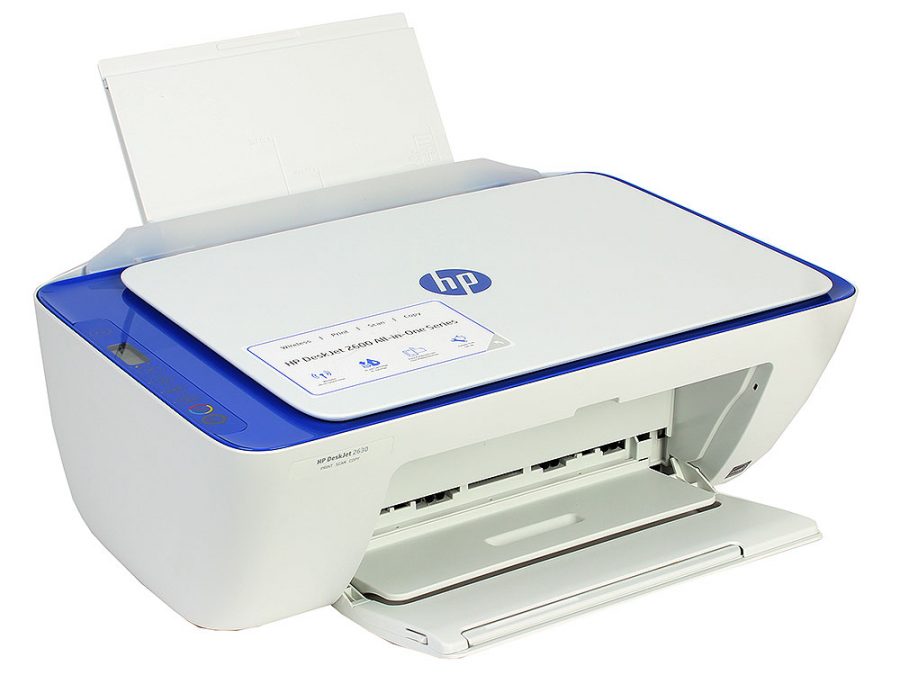
Content
The principle of operation of the MFP
The acronym MFP stands for All-In-One. They differ from conventional peripheral printers in the presence of additional features, such as scanning, copying and, in some cases, sending documents. The functions of various devices can be combined in one device or complement the basic printer through a modular system. Some advanced MFPs may have their own processor, memory, display, and offline printing. MFPs, like conventional printers, allow reuse of liquid ink cartridges by refilling.
Types of devices
To choose the right inexpensive printer-scanner-copier for the home, we will deal with their types. According to the principle of printing, multifunctional devices are divided into three main types - laser, inkjet and thermal sublimation. They differ among themselves in the speed of material output, the quality of the output image and the cost of consumables. We will discuss each of the species in more detail.
Inkjet
The principle of operation of inkjet MFPs is the formation of a point image using a special matrix with liquid ink. During long-term simple dye hardens on the nozzles of the print head and requires cleaning. However, most modern devices are equipped with an automatic cleaning function for dried paint. This consumes a huge amount of liquid ink. If the paint is very outdated and cannot be cleaned mechanically, the MFP should be taken to a repair shop.
Inkjet devices are characterized by high image quality when compared with conventional dot matrix printers, and have a high output rate of the material. The saturation and detail of the picture depends on the resolution and the number of colors used.
Benefits:
- They work quite quietly when compared with dot-matrix printers.
- They have more affordable cost than laser and thermo-sublimation materials.
- Low prices for consumables, if you buy cartridges with ordinary ink.
- Provide the perfect range of tones in monochrome photographs.
Disadvantages:
- Often do not support third-party cartridges.
- Low durability.
- Nozzles constantly require cleaning.
Laser
For printing images in laser MFPs, toner is used - a special dye that is attracted to the carrier due to oppositely charged elements. Then the paint is heat treated and solidifies in the pores of the paper. The laser image is highly resistant to mechanical and ultraviolet exposure. It is not washed and does not fade. Print speed is superior to both inkjet and some thermal sublimation models.
Benefits:
- High resistance to external damage.
- Print speeds outperform other types of printers.
- The most economical, given the cost and consumption of dyes.
Disadvantages:
- A lot of toxic substances are released during the printing process.
- Tangible power consumption due to the presence of high-voltage cells.
- The quality of photographs is lower than that of inkjet and thermal sublimation models.
- The high cost of the MFP itself.
Thermosublimation
Such MFPs use solid dye to apply the image. Under the influence of high temperatures, the ink evaporates and is fixed in the pores of the paper. Thermosublimation models have the highest quality image transmission. The picture is homogeneous, without banding or bitmap. The paint is not on the surface of the paper, but is soldered into the pores. This allows you to achieve maximum resistance to fading and water. Thermosublimation MFPs use quite expensive supplies due to the nature of the technology. However, they are quite economical in comparison with inkjet printers.
Benefits:
- Thermosublimation MFPs are characterized by high durability of the press, since the ink is under the surface of the paper.
- They print better than inkjet or laser models.
- Economical paint consumption.
Disadvantages:
- The high cost of the MFP itself and its consumables.
- Very slow output of photographs and other images with many halftones.
- High sensitivity of paints to ultraviolet radiation.
How to choose a good printer-scanner-copier
Before buying an MFP, you need to study the technical specifications of the devices. These include: print speed, noise level, print format, scanning, interfaces for interfacing with a PC, etc. Consider these parameters in more detail:
- Print speed. The optimal indicator is considered to be from 20 sheets per minute. This is enough for both home and semi-production use. If you don’t need to print a lot of documents, choose an MFP at a speed of up to 20 sheets per minute. It will be cheaper and will consume less electricity.
- The volume of work. For home use, it is best to purchase a device with a low noise level. It will not bother household or neighbors.
- Print format. The printer must support standard print formats - A3, A4, A5. This will allow you to print not only standard documents and forms, but also photographs, certificates, etc.
- Scanning. Be sure to pay attention to the resolution of the scanner. For use at home, 600-1200 dpi is enough. For professional scanning, it is better to take models from 2400 dpi. Inexpensive MFPs often have a low resolution.
- Interfaces for connecting to a PC. Some printers, scanners, copiers are able to connect to a computer or phone using wireless networks. Such models are quite expensive, but greatly simplify the printing and scanning process. If the MFP supports only a wired connection, make sure that the device has a standard USB output.
Also pay attention to additional features, such as continuous ink supply, the ability to print with the absence of one of the cartridges, remote control, etc. The more features, the higher the cost of the device.
Rating of the best models
There are many models of multifunction devices on the market, and it’s rather difficult to navigate them. We have compiled a rating of the best models of 2019, based on reviews and ratings of real customers.
Inkjet MFPs
Canon PIXMA MG2540S
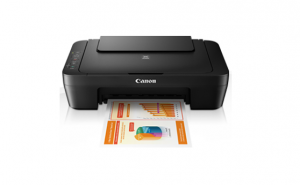
- The cost is much more affordable than similar models
- High functionality
- Convenient software maintenance with all the necessary settings and functions
- Cartridge refill capability
- Expensive consumables
- Leaves margins of 2 cm at the bottom of the sheet
Inexpensive printer-scanner-copier for home use. It has a maximum print resolution of 1200 × 600 pixels per inch. The output rate of the material is 1.6 sheets per minute. This is an excellent result for the budget price segment.Information recognition time - 4 sheets per minute. Pairing occurs using the common USB-B interface, which allows you to connect any device based on Windows and MAC OS.
HP Deskjet 2130

- Compact and lightweight body
- There is an opportunity for photo printing
- Easily handle borderless printing.
- Integrates with CISS
- Poor quality cartridges
- Cannot refill cartridge
One of the cheapest MFPs in the office equipment market. It has a high print speed - up to 16 color and up to 20 monochrome sheets per minute. Able to process documents in the format of 216x297 millimeters with optical resolution up to 1200 by 1200 pixels per inch.
Canon PIXMA MG3040
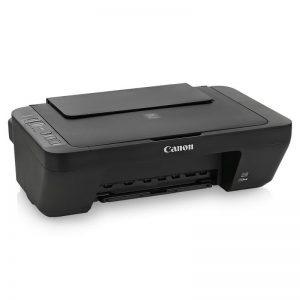
- There is a print function over the air
- Very easy to configure
- High quality output
- Can be controlled from a smartphone
- Noisy work
Budget multifunctional device with the ability to print and scan through the air. A wireless connection uses a Wi-Fi connection. The print speed is average - up to 8 black and white sheets and up to 4 color images per minute. Compatible with computers and laptops based on Windows and MAC OS.
Laser MFPs
Ricoh SP 210SU

- Large refillable ink cartridge
- Fast laser printing
- Suitable for office work
- Hard to install drivers
A high-performance MFP capable of printing 20,000 sheets per month without compromising its system. It has a bright LCD display with a convenient control panel. The main feature of the model is fast printing up to 22 pages per minute.
Pantum M6550NW
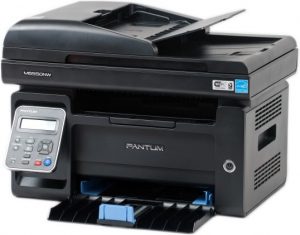
- Ability to connect to a computer via LAN RJ-45, USB and Wi-Fi
- Simple operation and quick installation
- Scans even to remote desktop
- High ink consumption
High-quality MFP with a highly functional scanner. There are options for sending to FTP, scanning to e-mail, as well as scanning to a computer. The print time of one monochrome sheet is 8 seconds, which is a high indicator among the budget segment.
KYOCERA FS-C1020MFP

- Compact body
- Cheap consumables and self-refueling options
- Remote Printing Capability
- Economic ink consumption
- Difficulty installing drivers
- No standard USB cable included
Convenient printer-scanner-copier of the middle class. It has high-quality four-color printing with the ability to work without a single cartridge. Management is via a liquid crystal display. There is a function to connect to a computer via wireless.
To summarize
You can find high-quality MFPs even in the budget segment. When choosing, consider the cost of consumables and the resource consumption of the device. Some manufacturers specifically lower the price of MFPs, but increase the cost of replaceable cartridges. A good device should support consumables from third-party manufacturers.
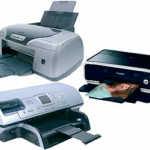
Brad, did not read:
A lot of toxic substances are released during the printing process.
Tangible power consumption due to the presence of high-voltage cells.